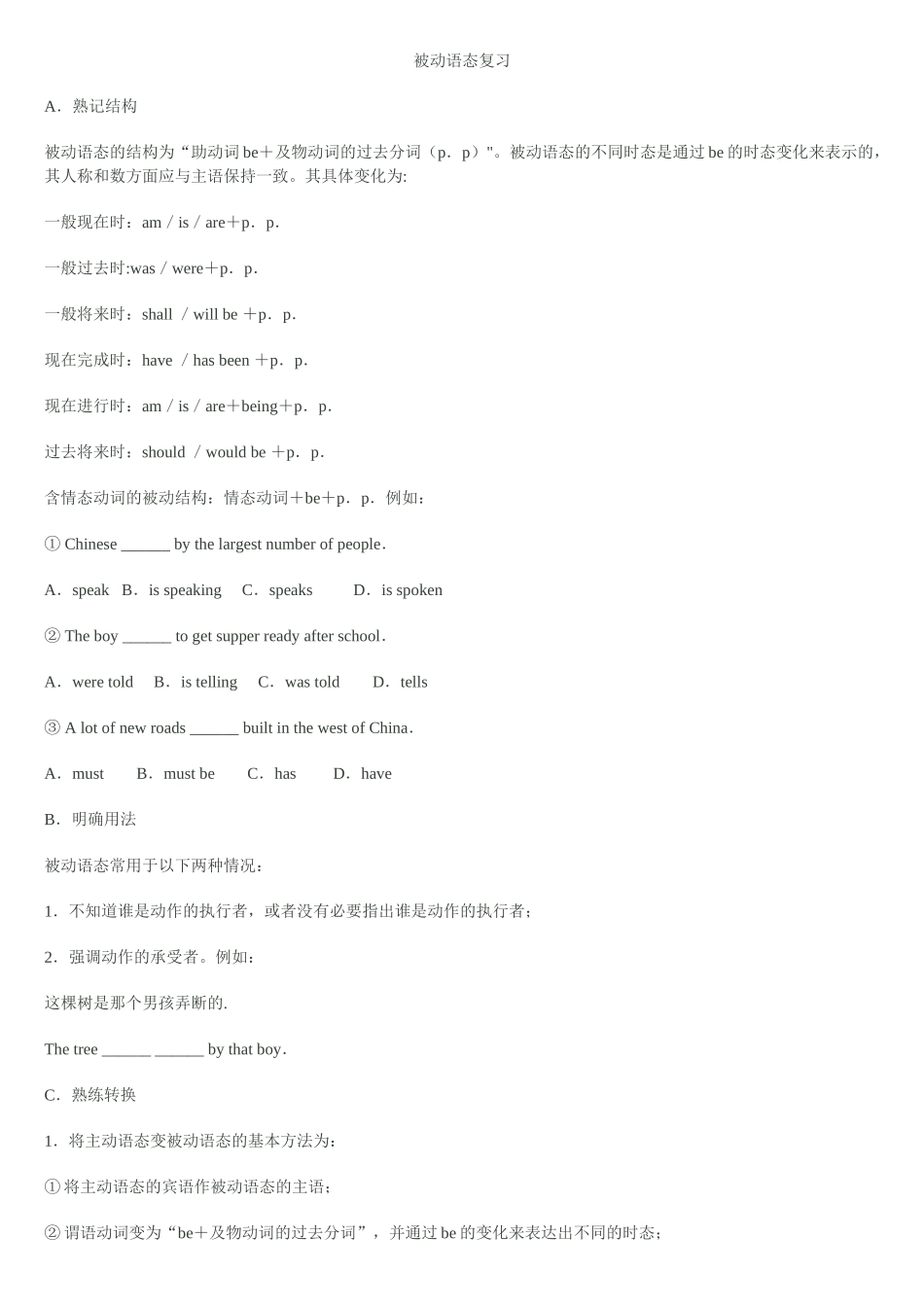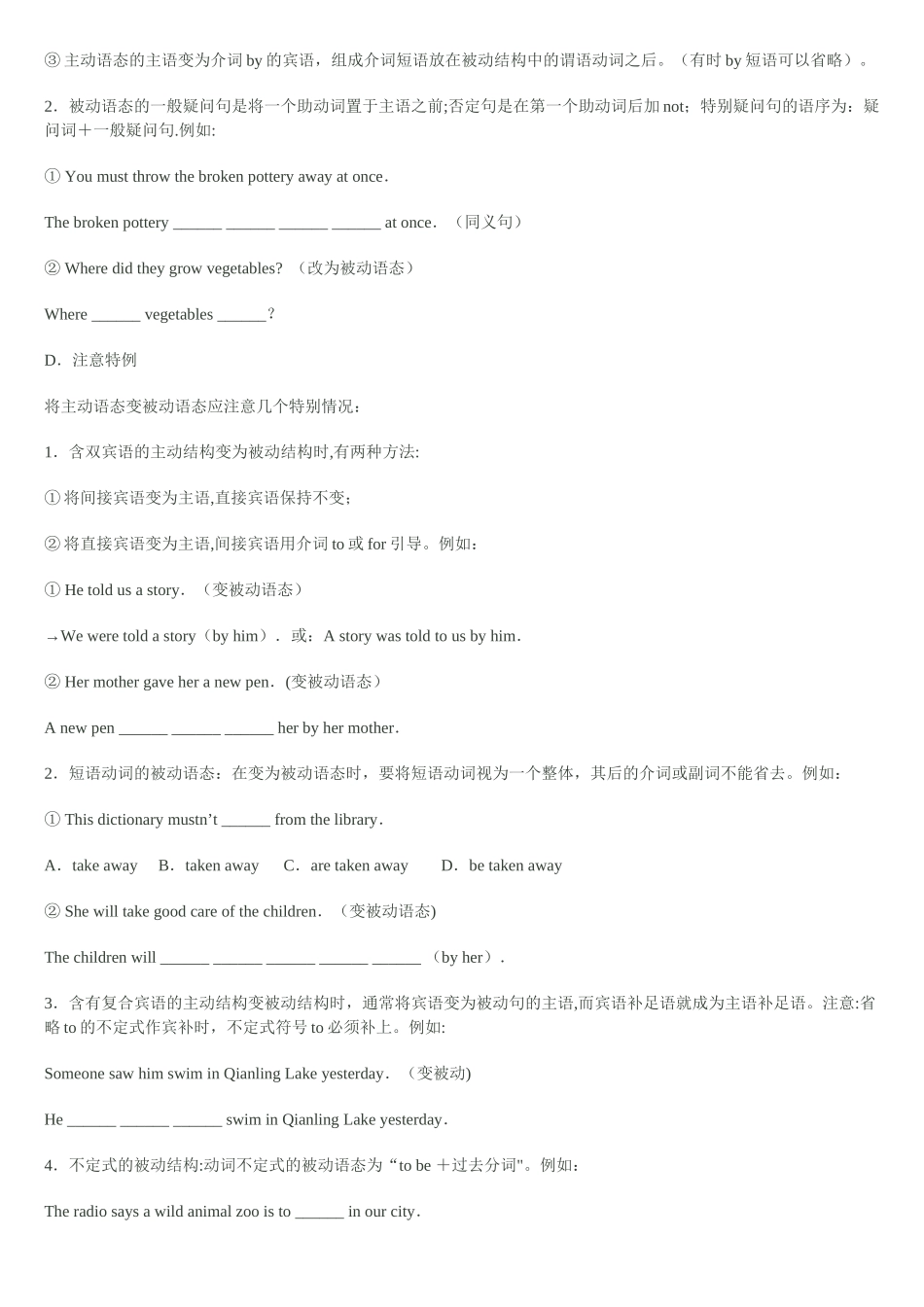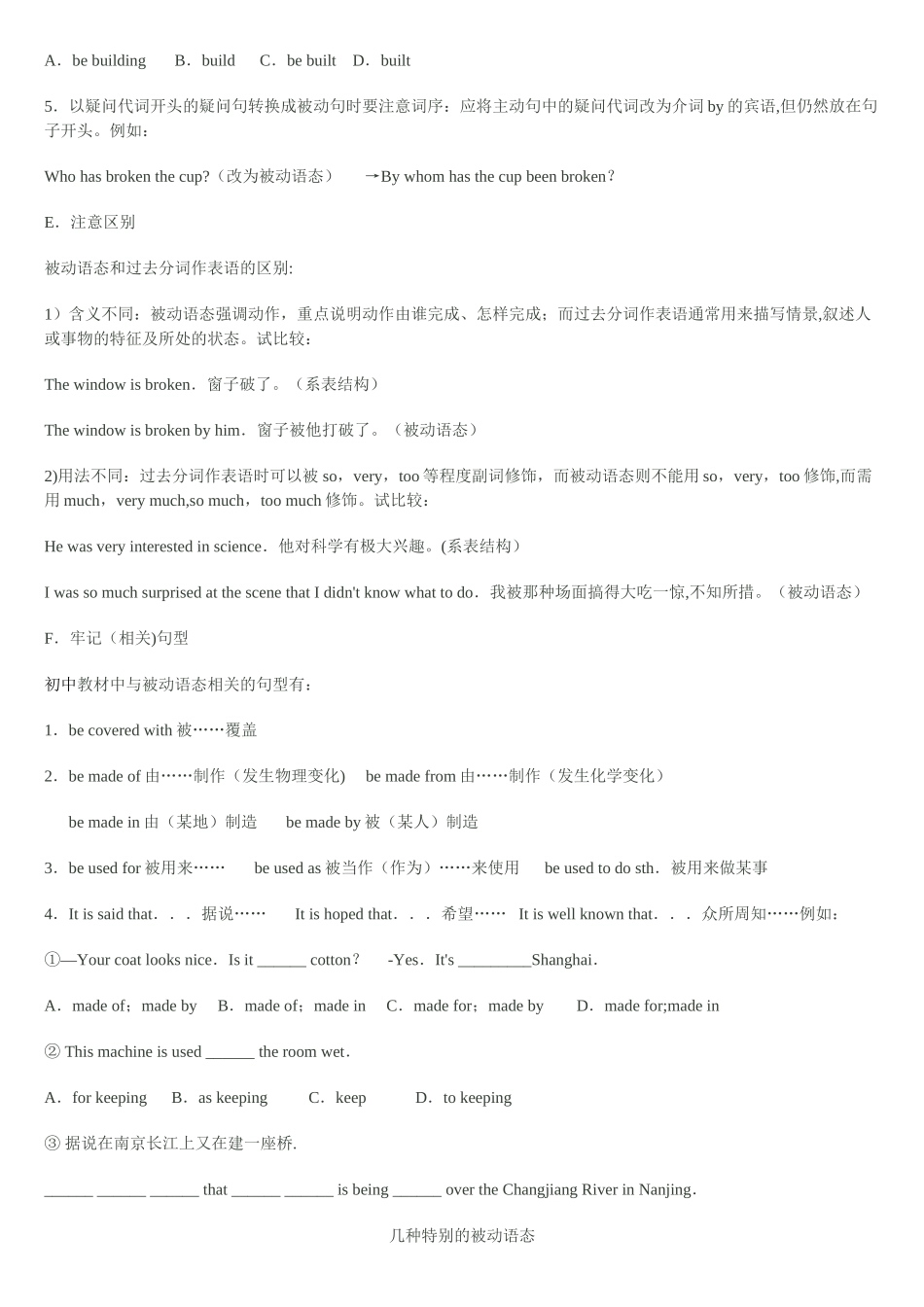被动语态复习 A.熟记结构被动语态的结构为“助动词 be+及物动词的过去分词(p.p)"。被动语态的不同时态是通过 be 的时态变化来表示的,其人称和数方面应与主语保持一致。其具体变化为:一般现在时:am/is/are+p.p.一般过去时:was/were+p.p.一般将来时:shall /will be +p.p.现在完成时:have /has been +p.p.现在进行时:am/is/are+being+p.p.过去将来时:should /would be +p.p.含情态动词的被动结构:情态动词+be+p.p.例如:① Chinese ______ by the largest number of people.A.speak B.is speaking C.speaks D.is spoken② The boy ______ to get supper ready after school.A.were told B.is telling C.was told D.tells③ A lot of new roads ______ built in the west of China.A.must B.must be C.has D.haveB.明确用法被动语态常用于以下两种情况:1.不知道谁是动作的执行者,或者没有必要指出谁是动作的执行者;2.强调动作的承受者。例如:这棵树是那个男孩弄断的.The tree ______ ______ by that boy.C.熟练转换1.将主动语态变被动语态的基本方法为:① 将主动语态的宾语作被动语态的主语;② 谓语动词变为“be+及物动词的过去分词”,并通过 be 的变化来表达出不同的时态;③ 主动语态的主语变为介词 by 的宾语,组成介词短语放在被动结构中的谓语动词之后。(有时 by 短语可以省略)。2.被动语态的一般疑问句是将一个助动词置于主语之前;否定句是在第一个助动词后加 not;特别疑问句的语序为:疑问词+一般疑问句.例如:① You must throw the broken pottery away at once.The broken pottery ______ ______ ______ ______ at once.(同义句)② Where did they grow vegetables? (改为被动语态)Where ______ vegetables ______?D.注意特例将主动语态变被动语态应注意几个特别情况:1.含双宾语的主动结构变为被动结构时,有两种方法:① 将间接宾语变为主语,直接宾语保持不变;② 将直接宾语变为主语,间接宾语用介词 to 或 for 引导。例如:① He told us a story.(变被动语态)→We were told a story(by him).或:A story was told to us by him.② Her mother gave her a new pen.(变被动语态)A new pen ______ ...


